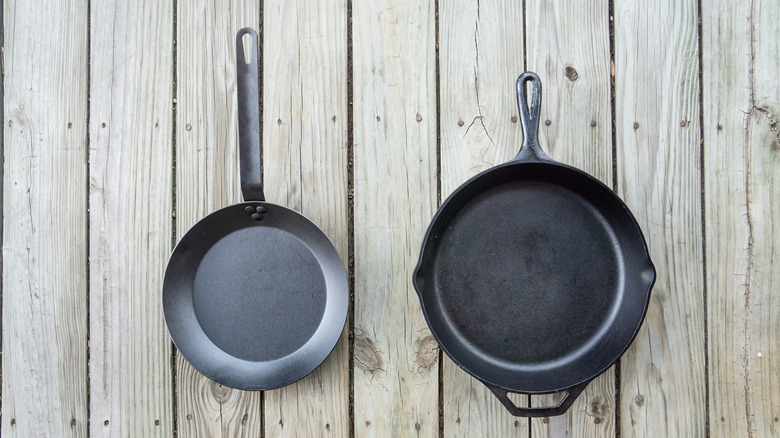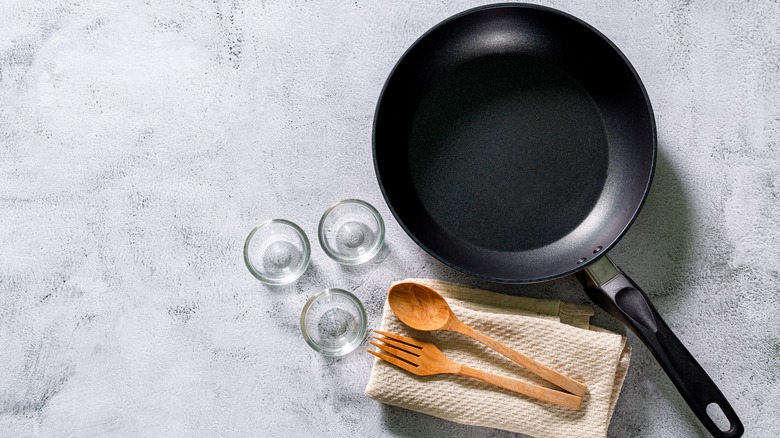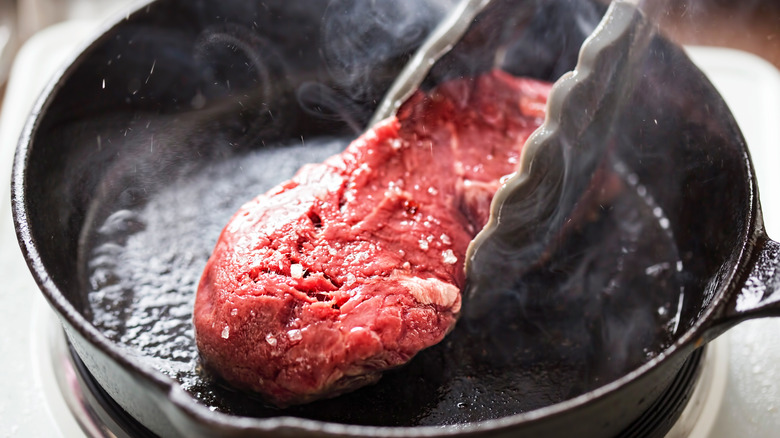How Do Carbon Steel Pans Compare To Cast Iron?
We may receive a commission on purchases made from links.
Cooking, like any other creative practice, attracts the strong-willed. Perhaps you've encountered someone for whom the matter of chopping and dicing takes on the weight of life and death in the heat of an argument — or perhaps you're one of them. Two fry cooks who disagree on whether or not ketchup belongs on a hot dog, for example, are unlikely to shake hands and agree to disagree. One person will insist on having the last word about the superiority of mustard, even if they have secretly conceded to the fact that the other person has a point.
Likewise, professional chefs and home cooks alike are bound to have strong opinions on the subject of cookware. But on the whole, most seasoned cooks (pun intended) give a thumbs-up to cast iron pans. The material is beloved for its durable, naturally nonstick properties, as well as its ability to retain and evenly distribute heat. Do you know what else has the same benefits? Carbon steel.
Lighter doesn't mean cheaper
Carbon steel was used to make swords in Damascus and Japan in 500 AD, according to Forged Components, Inc. It wasn't used for cooking until even later, making it a slightly newer kitchen staple than cast iron, which was first used as cookware in the sixth century BCE in China, per America's Test Kitchen. These days, the two alloys make for equally celebrated cooking vessels. While they're strikingly similar, they still have their own special qualities that make them useful for different cooking projects.
Let's start with the shape. Unlike the vertical sides of most cast iron pans, which make them great for deep-frying, carbon steel pans have sloped edges. This is a definite plus when sautéing vegetables or making scrambled eggs. Soft sides also make it much easier to toss things into the air, if you're into that.
The two pans also differ in weight. The Washington Post's Aaron Hutcherson has a lot of good things to say about carbon steel, including its relative lightness in comparison to cast iron. Not only is it easier to pick up, he says, but it also takes less time to heat. On the downside, he notes that carbon steel tends to run a little pricier than cast iron.
What about seasoning?
Differences aside, carbon steel and cast iron pans are both great investments, especially if you're looking to replace your well-loved but short-lived nonstick pan. If you've ever spent time perusing the crowded shelves of vintage cooking shops, you know first-hand that these babies can last for generations, so long as they're properly cared for. At the risk of sounding cliche, the better you treat your carbon steel of cast iron pan, the better it will treat you.
This brings us to the importance of seasoning. While other pans — like nonstick and stainless steel — only require a wash and dry, carbon steel and cast iron pans need a little extra care to prevent rust from forming on their surface. In turn, seasoning your pan after each use (which simply means rubbing it with a light layer of neutral oil, such as canola) will help it grow increasingly nonstick over time. It's a win-win, really. MasterClass offers a seven-step guide for properly seasoning your carbon steel pan, which also applies to cast iron.


